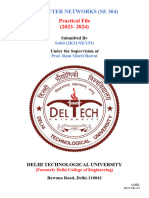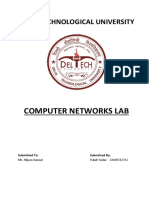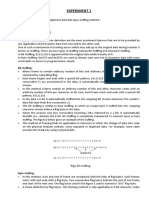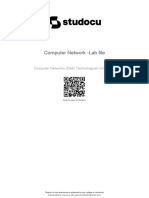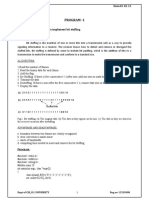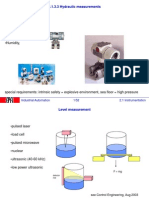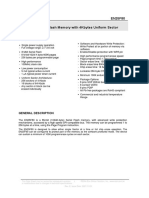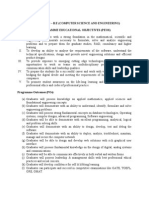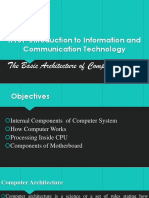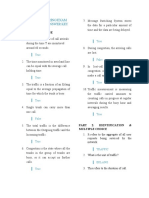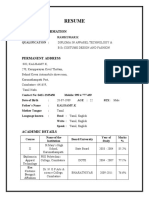0% found this document useful (0 votes)
16 views6 pagesCN - Experiment 1: Algorithm For Bit Stuffing
The document outlines the implementation of Bit Stuffing, Byte Stuffing, and Character Stuffing techniques in C/C++. It explains the theory behind each stuffing method, provides algorithms and flowcharts, and includes sample code for each technique. The discussion emphasizes the importance of these methods in data communication protocols to prevent misinterpretation of data.
Uploaded by
hyrazacuCopyright
© © All Rights Reserved
We take content rights seriously. If you suspect this is your content, claim it here.
Available Formats
Download as DOCX, PDF, TXT or read online on Scribd
0% found this document useful (0 votes)
16 views6 pagesCN - Experiment 1: Algorithm For Bit Stuffing
The document outlines the implementation of Bit Stuffing, Byte Stuffing, and Character Stuffing techniques in C/C++. It explains the theory behind each stuffing method, provides algorithms and flowcharts, and includes sample code for each technique. The discussion emphasizes the importance of these methods in data communication protocols to prevent misinterpretation of data.
Uploaded by
hyrazacuCopyright
© © All Rights Reserved
We take content rights seriously. If you suspect this is your content, claim it here.
Available Formats
Download as DOCX, PDF, TXT or read online on Scribd
/ 6

